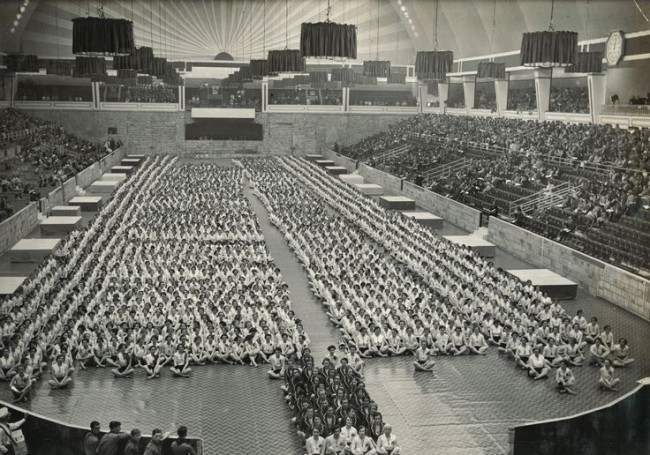The Women’s League of Health and Beauty began in 1930, founded by Mary Bagot-Stack. Mary was a forward-thinking woman who saw the need for women to stay active and healthy. She believed in the power of movement and exercise, which was not common at the time. Her daughter, Prunella, was just 15 years old when the League started.
Mary Bagot-Stack’s Early Vision
Mary Bagot-Stack was a pioneer in the world of fitness. She wanted to create a place where women could come together and exercise. Her idea was simple yet revolutionary: women of all ages and backgrounds could join and benefit from regular physical activity. The League’s motto, “Movement is life,” captured Mary’s vision perfectly. It showed her belief that staying active was key to living a healthy life.


When Mary Bagot-Stack died in 1935, Prunella took over the League. Despite her young age, Prunella was determined to keep her mother’s dream alive. She worked hard to grow the League, and her efforts paid off. By 1938, the League had spread beyond Britain to Canada, Australia, and Hong Kong, boasting a membership of 170,000 women.
The Rise of Women’s Fitness in Britain
During the 1930s, the idea of women participating in fitness and physical activities was becoming popular in Britain. This was a time when many women were seeking new ways to stay healthy and fit. The Women’s League of Health and Beauty was at the forefront of this movement. They offered classes that included exercises like pilates, aerobics, dance, and yoga. These activities were designed to be fun and engaging, helping women to stay active and healthy.
Prunella’s Role and Achievements
Prunella Bagot-Stack was not only a leader but also a symbol of the League’s spirit. She continued her mother’s work with great dedication. In 1937, she was invited by a Scottish Member of Parliament to open a new school swimming pool. During this event, she met Lord David Douglas-Hamilton, the youngest son of the 13th Duke of Hamilton. They quickly fell in love and got married. After their honeymoon, they even went mountaineering together in the Alps, showing their shared love for physical activity and adventure.


In 1938, Prunella led a delegation from the League to an international congress of physical fitness in Hamburg, Germany. This was a significant event as it showed the League’s growing influence on a global scale. However, during this visit, Prunella was uneasy about the Nazi Strength Through Joy program. This program aimed to promote physical fitness among Germans, but it was also a part of the Nazi regime’s propaganda. Despite her concerns, Prunella courteously hosted a German return visit the following year.
The League During Wartime
As World War II approached, the Women’s League of Health and Beauty faced new challenges. Many women from the League volunteered for war service, showing their commitment to their country. Prunella herself moved to Dorset to take care of her two young sons during the war. Despite these challenges, the League continued to promote fitness and health among women.


The League’s Philosophy and Impact
The League’s motto, “Movement is life,” was more than just words. It was a call to action for women everywhere to embrace physical fitness. However, it is important to note that the League’s first stated aim was to cultivate “racial health.” This reflected the imperialist and elitist views of the time, which also had racist undertones. Despite these controversial aspects, the League managed to appeal to a wide range of women. It attracted 60,000 members, offering them a sense of community and a way to stay fit.
The League was unique because it combined modern, commercial appeal with traditional values. It attracted older women who valued service and maternal roles, as well as younger women looking for new ways to stay fit. This blend of old and new helped the League grow and thrive.
A New Era of Women’s Fitness
The Women’s League of Health and Beauty played a crucial role in the development of women’s fitness. Before the League, there were few opportunities for women to exercise together. The League changed that by offering classes that were accessible and fun. This gave women a chance to stay healthy and fit in a supportive environment.
The League also introduced new forms of exercise to Britain. Activities like pilates, aerobics, dance exercise, and yoga were not common at the time. By offering these activities, the League helped to popularize them and make them a part of everyday life for many women.
Prunella Bagot-Stack: A Pioneer in Women’s Fitness
Prunella Bagot-Stack’s leadership was crucial to the League’s success. She continued her mother’s work with passion and dedication. Her efforts helped to grow the League and spread its message of health and fitness to women around the world. Prunella’s work did not stop with the League. She continued to promote fitness and health throughout her life, becoming a respected figure in the world of women’s fitness.

The Women’s League of Health and Beauty left a lasting legacy. It showed that women could come together to stay fit and healthy. It also helped to change attitudes towards women’s fitness. Before the League, many people believed that physical activity was not suitable for women. The League challenged this idea and showed that women could be just as active and fit as men.
The League also played a role in the development of modern fitness activities. By introducing pilates, aerobics, dance exercise, and yoga to Britain, the League helped to lay the groundwork for today’s fitness industry. These activities are now a regular part of many people’s fitness routines.


